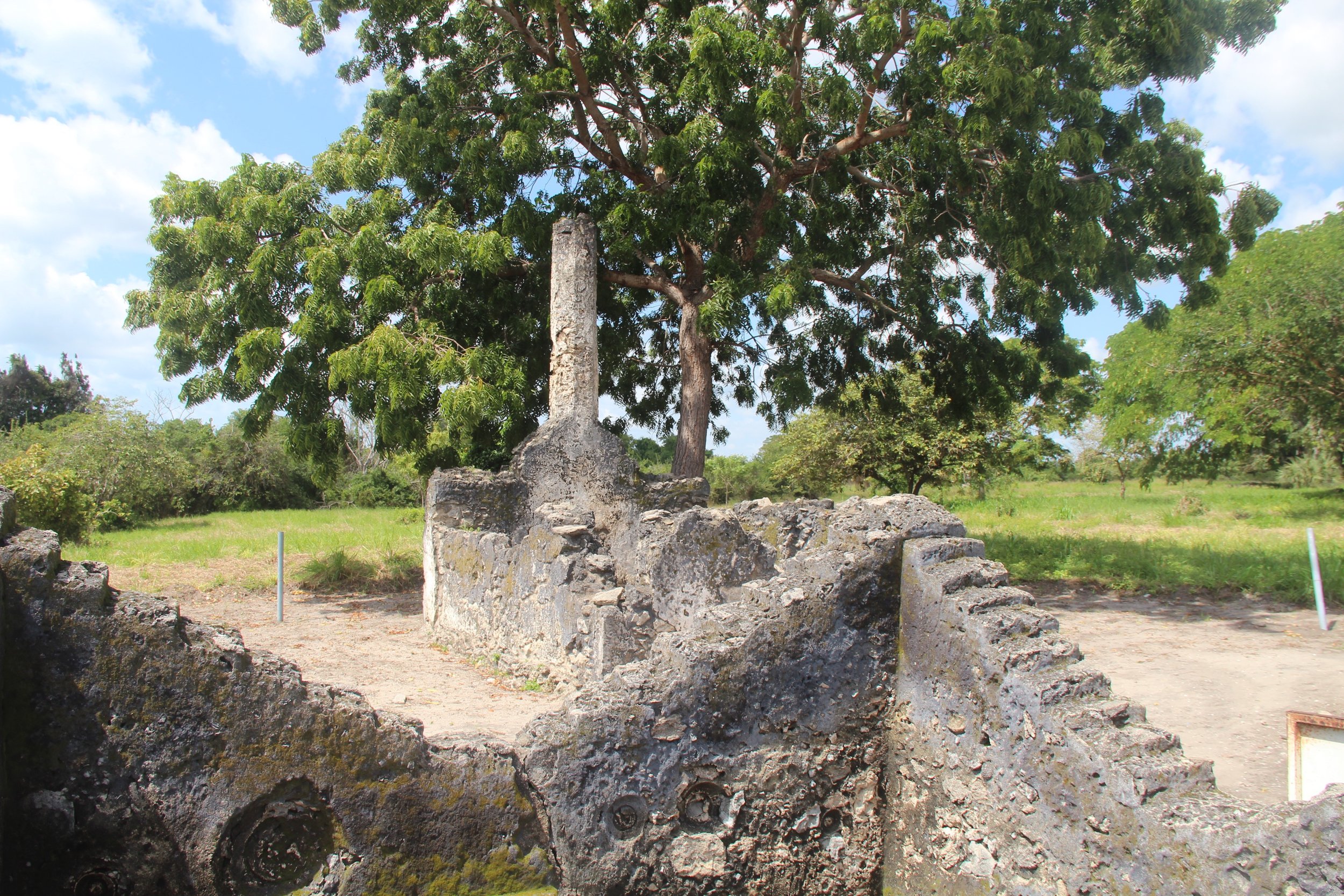Safari Through Tanzania: Discovering the Language, the People, and the Landscape
Fishing boats drift in the Indian Ocean
The dashboard clock blinked 1:45 a.m. It was pitch black outside, and we had been stuck in traffic for over an hour. It was almost 8 p.m. EST - the Swahili clock is six hours ahead - and we were headed to a Chinese restaurant/karaoke bar for dinner. The radio blared a mix of Ed Sheeran remixes, Tanzanian hip-hop, and DJs arguing in rapid Swanglish. We had just finished our fourth week in Dar es Salaam.
We passed a row of barber shops, each adorned with faces of celebrities, many American. Will Smith, Chris Brown, Drake, Barack Obama, Nelson Mandela, Donald Trump - although it’s difficult to imagine the clientele whom a picture of Trump’s combover would attract into the shop. We crawled by men selling mops and copies of Ben Carson’s Gifted Hands, the traffic turning a ten-mile trip into a two-hour journey. Packed daladalas, three-wheeled bajajis, men peddling carts of ice cream, and speeding motorcycles competed for space on the underdeveloped roads, swerving between the left and the right lane without notice if one side of the path was too rough to drive on. As we inched downtown, we passed twenty-story highrises and massive billboards, as well as open-air markets and shanties selling trinkets and homegoods. The juxtapositions in Tanzania’s development policies are thought-provoking. We’d seen men in suits walk into office buildings without power; and the huge, lush campus of the university where we stayed, with its many ongoing construction projects, still doesn’t have running water or toilets that flush.
A view of the ruins of Kaole.
As we sat in traffic, I reflected on the diversity of the Tanzania we had seen thus far, and what I knew was still to come. Our first full week in the country had closed with a trip to Bagamoyo, a small coastal town and the first capital of German East Africa. Bagamoyo is home to the ruins of Kaole, which contain remnants of one of the oldest mosques in mainland Tanzania, and in East Africa as a whole. We visited the town’s Catholic museum as well, touring major slave trading points that had funneled money into the city over two hundred years before. The themes of memory and the slave trade were echoed in our second excursion, when we spent a weekend on the island of Zanzibar. Once an independent country, Zanzibar was most prosperous when exporting slaves and the spices which they harvested. The island still farms and harvests huge crops of spices today, and we spent a few hours touring an operational farm, chewing on pieces of cinnamon bark and pepper pods pulled straight from the vine. Every church or museum we explored in Stone Town threaded bits of the island’s history into a discussion of its contemporary challenges and successes.
A male lion rests in the shade in the Serengeti.
When we weren’t visiting historical landmarks or taking pictures with Zanzibar’s unique red colobus monkeys, we were relaxing on the island’s beautiful beaches. Zanzibar’s serene waters provided the perfect opportunity for snorkeling, so we wound our way through Stone Town’s surprisingly European streets and sailed a small speedboat out to Prison Island. The island houses a government-protected sanctuary for massive Aldabra tortoises, allowing us another glimpse at East Africa’s incredible wildlife. After Zanzibar, however, we would travel to Arusha, the Serengeti, and Ngorongoro Crater, where Tanzania’s fauna is at its most diverse and breathtaking.
It was 3 a.m. Swahili time before we finally pulled into The Great Wall, one of the nicer Chinese restaurants on the touristy strip of the Peninsula. We had a week left of class before we would head to the Serengeti for safari, one of the selling points of the Hoyas in Tanzania program. As we enjoyed a break from the typical Tanzanian fare of mchuzi na wali, or stew with rice, we discussed our favorite parts of the trip so far - meeting Mohammed Dewji, MSB alum and the youngest billionaire in Africa, spending a day on Mbudya Island, sharing a home-cooked meal with the incredible Professor Mutembei. Each day in Tanzania brought something new and unexpected, even as we fell into the routine of classes and internships. The impact that the country, its language, and its people had on me as a student is one that I will never forget.



